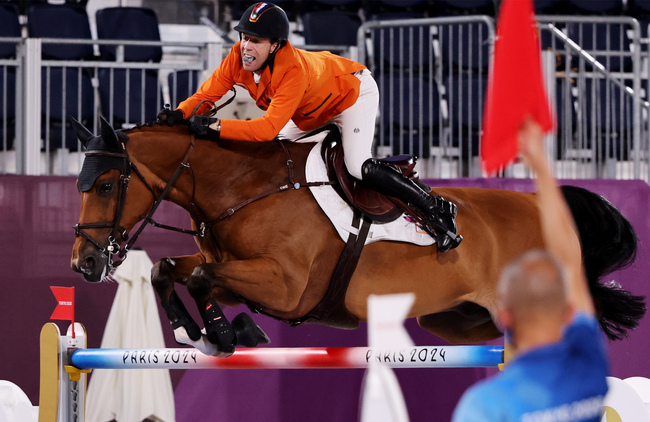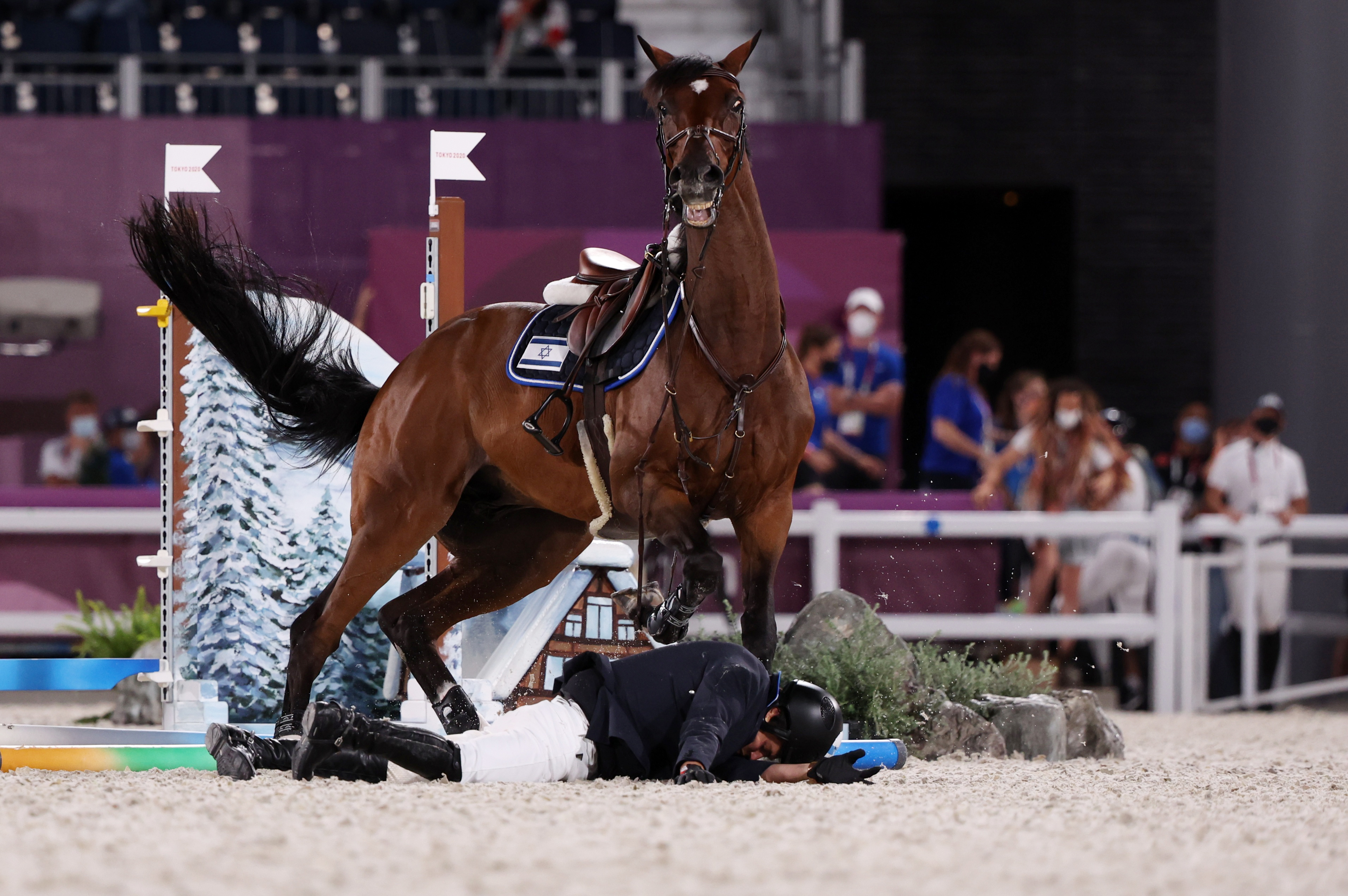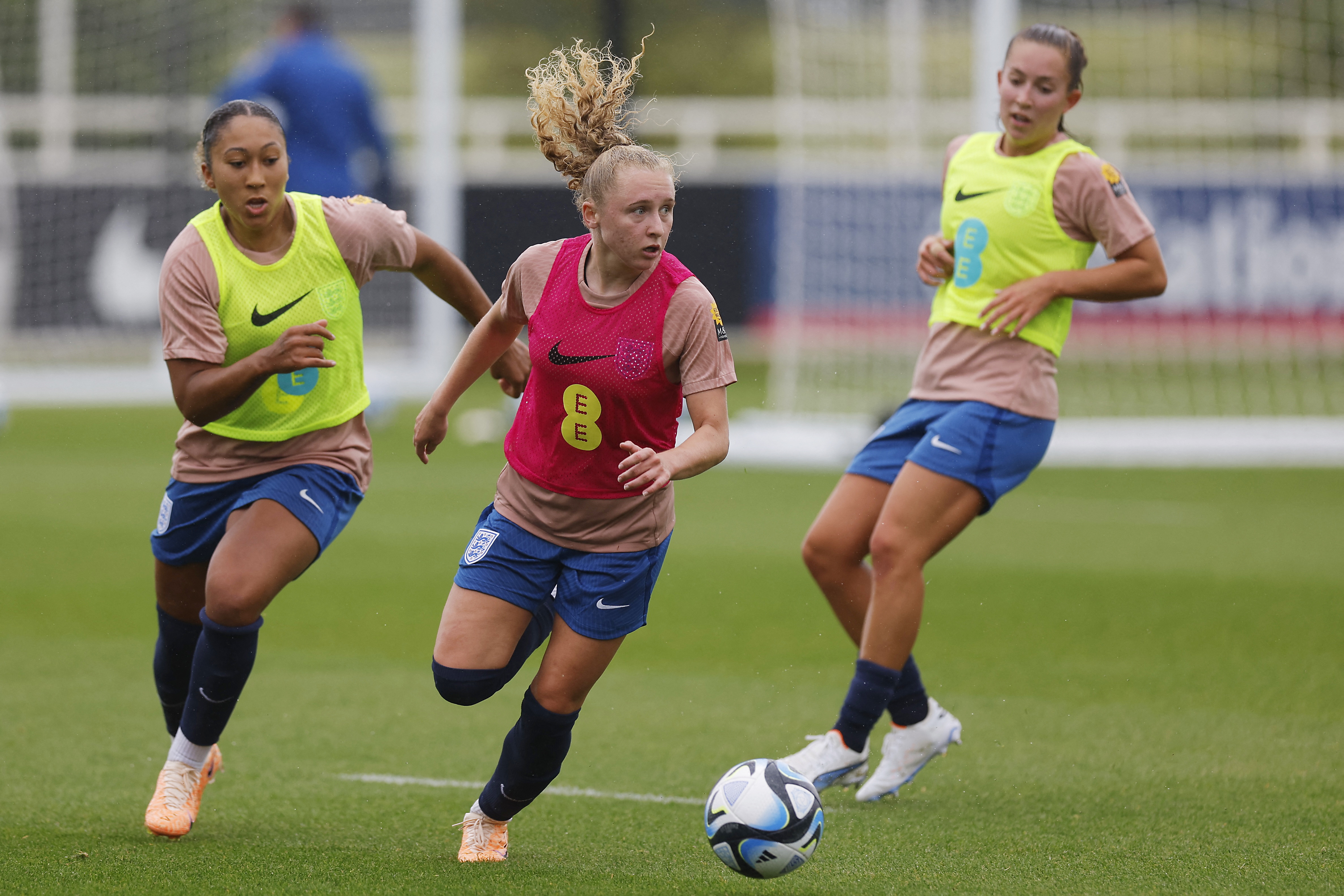You are viewing 1 of your 1 free articles
Demands of Sport: Show Jumping
Show jumping demands holistic conditioning to prevent injuries, and clinicians must provide effective rehabilitation for injured riders, given the sport’s high injury risk. Christie Wolhuter discusses the demands of show jumping to improve injury prevention and management.
Maikel van der Vleuten of the Netherlands, on his horse Beauville Z, demonstrates the physical demands on the rider when show jumping. REUTERS/Alkis Konstantinidis
Horses do all the work, right? This question has irked riders for centuries. The research reveals exciting theories on how higher-level riders can make it look effortless. Put a novice rider on an inexperienced horse over a few large fences, and the differences become apparent. Show jumping is one of three Olympic equestrian sports. It is the most popular equestrian discipline in terms of the highest number of equine and human athletes and competitions registered with the Fédération Equestre Internationale (FEI)(1).
Show jumping places great physical demand on the equine athlete, and at an elite level, horses jump 10–14 obstacles at a canter, which can reach 1.7m high and 2m wide. Penalties accumulate for knocking down a fence, refusing to jump a fence, or exceeding the time allowed for that round. The average speed of a round is 24 kmh−1, but this varies(2). If more than one rider finishes their rounds without penalties, the remaining combinations compete against the clock to determine the winners in what is known as a ‘jump-off’(3).
As jump materials become lighter, the cups in which the poles lay become shallower, and the time allowed to complete the rounds becomes shorter; a rider’s ability to assess fence dimensions during the approach is essential for developing the appropriate linear and angular momentum at take-off so the combination can clear the fence without penalties(2).
The study of rider biomechanics is vital for improving the performance of the horse and rider combination. Understanding how to correctly influence a rider’s physical fitness may reduce the risk of injury to both humans and equine. Horse riding is dangerous, and show jumping is the most dangerous activity. Seven of nine major pelvic injuries caused while riding occurs during show jumping(4). Riders competing at a higher level also show higher injury rates than novice riders(5). Furthermore, professionals are more likely to sustain severe injuries than amateurs(6). This may also be due, in part, to the number of hours spent in the saddle compared to a novice and the difficulty of navigating the sheer height of the fences at an international level.
In a review of the U.S. National Trauma Data Bank, 45.2% of sports-related traumatic brain injuries from 2003 to 2012 in adults were sustained while participating in equestrian sports(7).
Show Jumping Phases
The phases of a jump are known as approach, take-off, flight, and landing (see figure 1). The horse approaches the fence as a canter, with the rider either sitting in the saddle or in what is known as a light-seat. Light-seat is where the rider is out of the saddle, balancing their weight on their lower leg through the stirrups. This requires a higher isometric demand from the muscles of the quadriceps and back extensors(8).
Take-off represents the jump phase where the horse leaves the ground, first with its front legs, then by a powerful thrust from the hindlimbs to clear the fence. The rider assumes the jumping position by closing the hip angle and leaning forward to balance their center of mass over the horse’s(5).
During the flight phase, the horse-rider combination is airborne, and the rider remains in the jumping position. As the rider approaches landing, they open the hip angle, move the lower leg forward, and extend the back to prepare for the impact of the horse’s landing(8).
It is challenging to study the biomechanical and physiological components of riding as the repetitive and rotary motions of the horse cannot easily be mimicked in a research environment(9). There is a lack of evidence on how a rider can interact with and influence a horse over the course of fences(10). There is also very little evidence on what muscles a rider uses and in what order to synchronize with a horse while jumping successfully(5).
Riders play a critical role in controlling the horse’s motion. The rider effect on the horse is behavioral and inertial. Behavioural in the sense that the rider, through training, teaches the horse to respond to cues or aids(11). For example, light pressure applied by the rider’s lower leg will usually instruct the horse to increase in pace or impulsion. Inertial in the sense that the rider’s mass distribution will affect changes in the horse’s motion. In jumping, one significant change is the change in angular momentum that the rider has on the horse-rider system over a fence(11).
However, the inertial effect of the rider on the horse during take-off and flight over the jump does not affect the horse’s rotation or angular momentum(11). This seems to suggest that the ability of the rider to control the horse between the fences and correctly time the jump take-off is more important than the rider’s position over the fence(11).
There are clear differences between experienced and novice riders jumping a 1.2m vertical jump in terms of accelerations of body segments measured using inertial motion sensors(12). Experienced riders have less total head acceleration during the take-off, flight, and landing than novice riders. When novice riders are on an experienced horse, they demonstrate less total body acceleration. Further, novice riders have higher peak arm and leg accelerations on landing from the jump, suggesting they cannot maintain their balance(12).
This demonstrates that the training and experience of a horse can reduce kinematic demand on the rider and visa versa. Moreover, advanced riders can better stabilize the head due to better motor control, which would aid in stabilizing the vestibular system(12).
The novice riders also consistently show the greatest technique breakdown on the jump landing as it is the point where they need to absorb the most force with their ankles, knees, hips, and spine(12).
Physiological Demands
Researchers in France conducted a well-designed study assessing oxygen consumption (VO2), ventilation (VE), and heart rate (HR) in five recreational riders during dressage and jumping sessions. The VO2 increased progressively during dressage, reaching 1.9 l/min during the canter, while the jumping session showed higher values, with a mean VO2 of 2.4 l/min during the jumping course. Riders’ energy expenditure varied based on the horse during dressage, highlighting the impact of horse choice on energy demands (see table 1). Overall, the findings emphasize the importance of aerobic capacity in riding performance, suggesting regular riding practice and physical training to enhance competitive riders’ fitness(13).
Table 1: Rider’s effort during various gaits
| Gait | Mean VO₂ (L/min) | Mean HR (bpm) | % of mean VO₂ max (L/min) | % of maximum heart rate |
| Walk | 0.7 | 106 | 22 | 57 |
| Trot | 1.47 | 131 | 46 | 70 |
| Canter | 1.90 | 144 | 59 | 77 |
| Four minutes of cantering in a light seat | 2.17 | 155 | 68 | 83 |
| Trotting over jumping obstacles for five minutes | 2.02 | 156 | 63 | 83 |
| Cantering over jumping obstacles for five minutes | 2.02 | 159 | 63 | 85 |
| Jumping a course for up to one and a half minutes | 2.25 | 176 | 70 | 94 |
Logically, as the horse’s pace increases, so does the intensity of the cardiovascular and muscular effort. Ridden trot and canter work can be categorized as moderate-intensity exercise, with jumping efforts requiring more cardiac exertion from the rider and deemed higher-intensity exercise(13).
Show jumping training sessions typically last 30 – 45 minutes per horse, and competition rounds average one and a half minutes. This varies depending on the course designer. One event usually has several rounds before a winner is determined. Most riders will compete with an individual horse in one to two classes per day, usually over a show that lasts a few days. Some riders ride up to four horses daily, competing in their respective categories. Even though research does not definitively demonstrate how a rider can jump fences astride an animal weighing up to 700 kg, there have been exciting research grounds in the last few years.
The demands of show jumping place considerable forces and physiological stressors on riders. A cornerstone of injury prevention is holistic conditioning targeting the physical and cognitive training modalities. Furthermore, following injury, clinicians must ensure that riders receive adequate rehabilitation to restore physiological and mental capacities to meet the demands of show jumping. Sports medicine clinicians must ensure that athletes receive excellent injury management as the high-risk nature of show jumping will place inadequately prepared athletes at risk for mild and severe injuries.
References
- Federation Equestre Internationale FEI World of Sport-FEI Annual Report 2019.
- Animal Frontiers, Volume 12, Issue 3, June 2022, Pages 45–53.
- Animals (Basel). 2021 Feb 5;11(2):414.
- Br J Sports Med 1997;31:249–51.
- Comparative Exercise Physiology, 11(2), 119-125.
- Curr. Sports Med. Rep. 2010; 9:299–302.
- Neurosurg. Focus. 2016; 40:E4.
- Comparative Exercise Physiology 8: 53-62.
- Vet J. 2013 Mar;195(3):275-81.
- Annu Int Conf IEEE Eng Med Biol Soc. 2010;2010:684-7.
- Equine and Comparative Exercise Physiology, 1(1), 33-40.
- IEEE Engineering in Medicine and Biology Society. Conference. 2010. 684-7.
- Eur J Appl Physiol. 2000 Aug;82(5-6):499-503.
Newsletter Sign Up
Subscriber Testimonials
Dr. Alexandra Fandetti-Robin, Back & Body Chiropractic
Elspeth Cowell MSCh DpodM SRCh HCPC reg
William Hunter, Nuffield Health
Newsletter Sign Up
Coaches Testimonials
Dr. Alexandra Fandetti-Robin, Back & Body Chiropractic
Elspeth Cowell MSCh DpodM SRCh HCPC reg
William Hunter, Nuffield Health
Be at the leading edge of sports injury management
Our international team of qualified experts (see above) spend hours poring over scores of technical journals and medical papers that even the most interested professionals don't have time to read.
For 17 years, we've helped hard-working physiotherapists and sports professionals like you, overwhelmed by the vast amount of new research, bring science to their treatment. Sports Injury Bulletin is the ideal resource for practitioners too busy to cull through all the monthly journals to find meaningful and applicable studies.
*includes 3 coaching manuals
Get Inspired
All the latest techniques and approaches
Sports Injury Bulletin brings together a worldwide panel of experts – including physiotherapists, doctors, researchers and sports scientists. Together we deliver everything you need to help your clients avoid – or recover as quickly as possible from – injuries.
We strip away the scientific jargon and deliver you easy-to-follow training exercises, nutrition tips, psychological strategies and recovery programmes and exercises in plain English.













